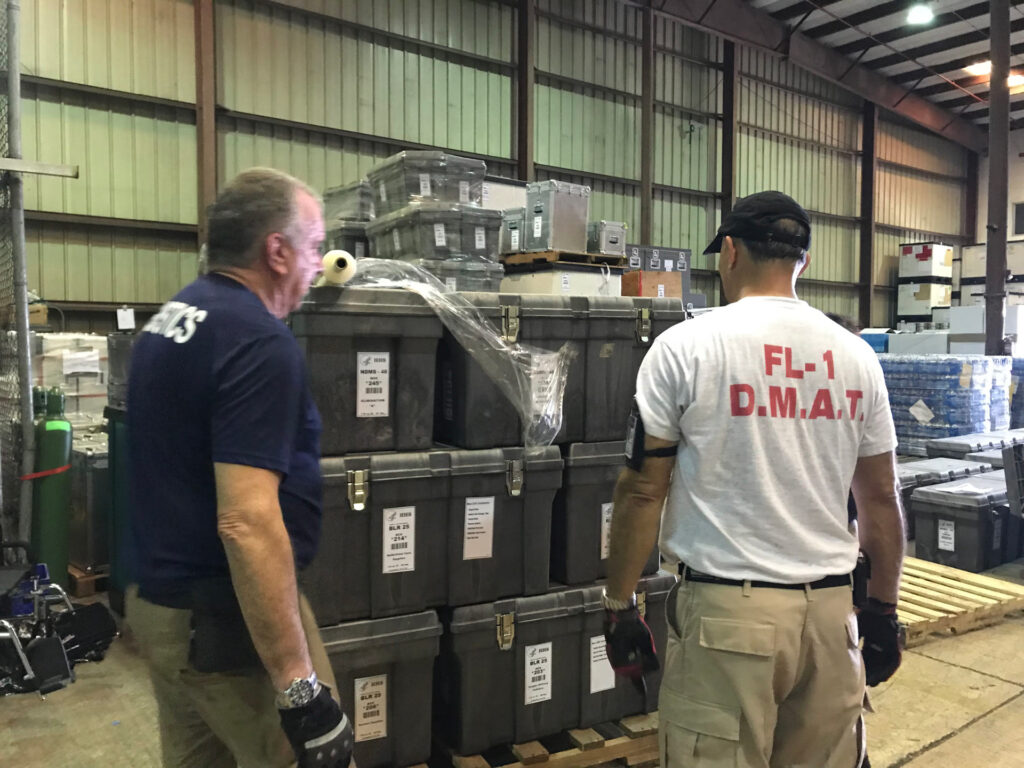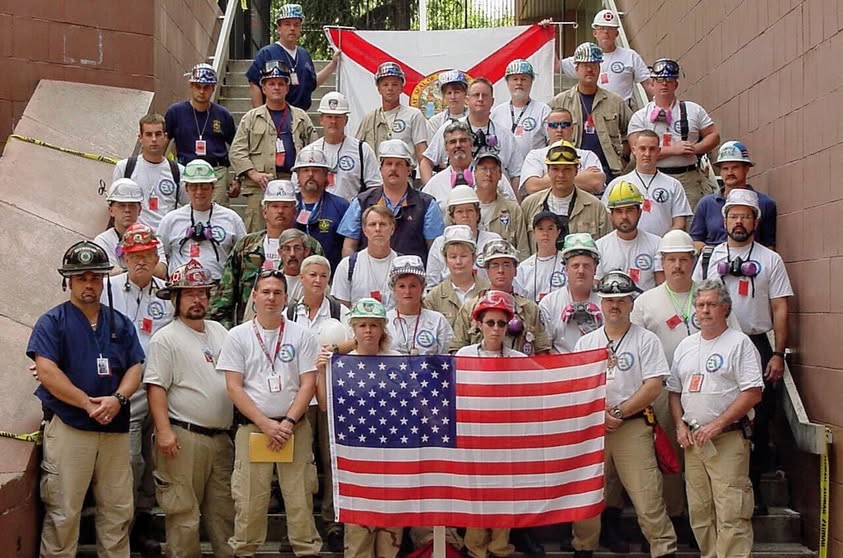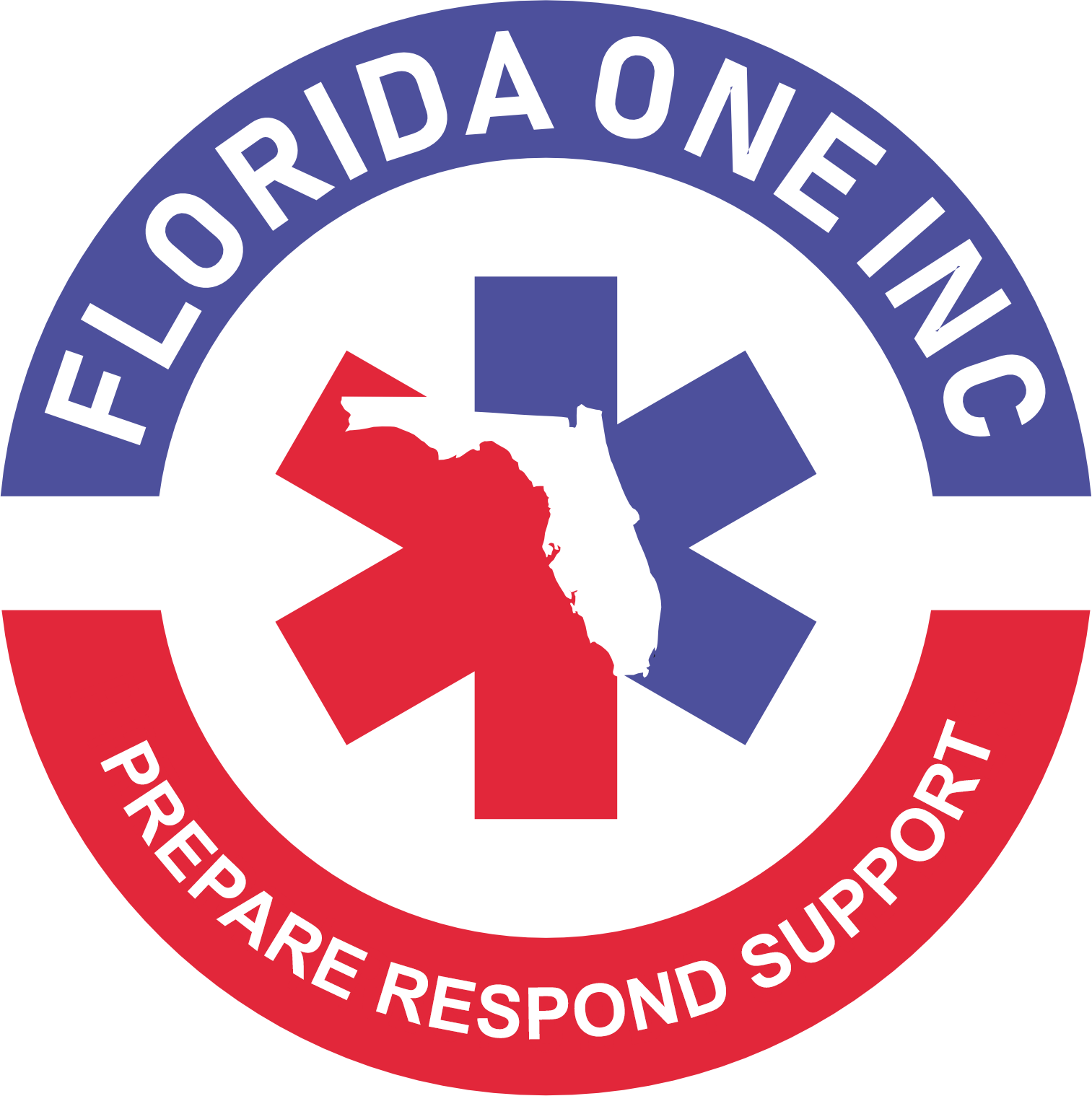Disaster Medical Assistance Team
FloridaOne Rapid Response Medical Support for Disaster Relief
The FL-1 DMAT deploys quickly with medical expertise and equipment to support communities during disasters. From hurricanes to mass casualty events, our team provides essential emergency care and logistical support to help save lives and relieve strained healthcare systems.

OUR MISSION
Reduce fatalities and long-term health complications by delivering high-quality emergency care directly to affected populations and by supporting overwhelmed hospitals and clinics during large-scale emergencies.
Our Capabilities
- Deploy rapidly to disaster sites anywhere in Florida and across the United States
- Provide emergency medical care in field conditions using portable medical equipment and temporary shelters
- Coordinate with local hospitals, emergency management agencies, and the National Disaster Medical System (NDMS)
- Sustain operations independently for several days to ensure uninterrupted patient care
- Assist during planned large-scale events to maintain readiness and community health
By operating within the NDMS framework, FL-1 DMAT enhances Florida’s overall disaster preparedness and response capability, ensuring efficient use of federal resources while prioritizing local needs.


Established in 1989 as one of the nation’s earliest DMATs, FloridaOne DMAT is hosted by FloridaOne, Inc. and operates out of Fort Walton Beach, Florida. The team is always on standby, ready to deploy within hours of activation with medical equipment, temporary shelters, and the ability to be fully self-sufficient for several days in austere environments.
We are a federally recognized and state-supported team dedicated to delivering emergency medical care and logistical support during natural and human-caused disasters. Whether responding to hurricanes, mass casualty incidents, or other crises, FloridaOne DMAT integrates seamlessly into local and federal emergency frameworks to protect public health and save lives.
DMAT Key Roles
Our Disaster Medical Assistance Team (DMAT) brings together a wide range of specialized professionals, each playing a critical part in delivering rapid, effective medical response during disasters. Every role is essential to ensure comprehensive care and smooth mission operations in challenging and unpredictable environments.
Medical Staff
Licensed healthcare professionals who provide critical, hands-on patient care in disaster environments. Their responsibilities include rapid triage to prioritize patients by severity, delivering emergency treatment in often austere and resource-limited settings, and coordinating transport to higher levels of care when necessary. Their expertise ensures timely, effective medical intervention to save lives during chaotic and high-pressure incidents.
Physicians, Nurse Practitioners, and Physician Assistants
These advanced clinicians lead the delivery of comprehensive clinical care in the field. They perform complex diagnostic assessments and procedures such as advanced airway management, wound care, and medication administration. Additionally, they oversee patient management plans, making crucial decisions about treatment priorities and coordinating care with other team members to optimize patient outcomes under challenging disaster conditions.
Registered Nurses, Licensed Practical Nurses
RNs and LPNs provide essential bedside nursing care, including administering medications, monitoring vital signs, and assisting with clinical evaluations. They play a key role in ongoing patient assessment, wound management, and ensuring patient comfort while supporting physicians and advanced practitioners. Their vigilance and care maintain patient stability throughout the response operation.
Paramedics & Emergency Medical Technicians
These first responders specialize in pre-hospital emergency care, providing rapid stabilization and life-saving interventions at the disaster scene. They are skilled in airway management, hemorrhage control, intravenous therapy, and safe patient transport. Their ability to adapt quickly to dynamic situations ensures patients receive immediate attention and are prepared for transfer to medical facilities when needed.
Respiratory Therapists
Respiratory therapists are responsible for managing airway care, including ventilation support and oxygen therapy, which are often critical for trauma and acute medical cases during disasters. They operate and maintain respiratory equipment, provide treatments such as nebulization and suctioning, and collaborate with the medical team to ensure patients maintain adequate respiratory function in the field.
Pharmacists
Pharmacists oversee the secure handling, dispensing, and management of medications within the disaster response setting. They maintain accurate pharmaceutical inventories, ensure proper storage and distribution, and provide drug safety guidance to clinicians. Their role is essential in preventing medication errors, managing controlled substances, and adapting drug therapies to meet the unique challenges of disaster medicine.
Planning Section
The Planning Section is responsible for gathering and analyzing incident data, forecasting operational needs, and developing Incident Action Plans (IAPs). They continuously monitor evolving conditions to adjust strategies, coordinate resource allocation, and support communication between teams. Their foresight and coordination help maintain mission flexibility and effectiveness throughout the response.
Logistics Section
The Logistics Section ensures that all operational units are fully equipped and supported. This includes procurement of medical supplies, transportation of personnel and equipment, setup of temporary medical shelters, and managing supply chains under difficult conditions. They solve logistical challenges to keep the team self-sufficient and operationally ready, often working behind the scenes to enable frontline medical care.
Finance/Admin Section
This section manages all financial and administrative aspects of the deployment. They meticulously track operational costs, manage documentation necessary for reimbursements, and ensure compliance with federal and state regulations. Their oversight ensures that resources are used responsibly and that all financial processes are transparent and auditable.
Safety Officer
The Safety Officer maintains a vigilant focus on the health and safety of both responders and patients. They identify potential hazards, enforce safety protocols, and conduct regular risk assessments throughout the mission. By proactively mitigating risks, they help prevent injuries and ensure that operations proceed without avoidable incidents.
Command Staff
Led by the Team Leader and Deputy Team Leader, the Command Staff provides unified direction and oversight for the entire mission. They ensure that all activities comply with the Incident Command System (ICS) standards and maintain clear communication between sections. Their leadership guides effective decision-making, coordination, and mission success under often complex and rapidly changing conditions.
TEAM LEADERSHIP
Led by Professionals Who Understand

Gary Kruschke
Team Leader

Jay Brosnan
Deputy Team Leader/Executive Officer
The team is led by Team Leader Gary Kruschke and Deputy Team Leader/Executive Officer Jay Brosnan, both experienced professionals committed to excellence in disaster medical response.
Get Involved
Want to make a difference?
Join a Response Team
Donate Equipment or Supplies
Give Financially
Florida Needs Heroes Like You. Team Up with FloridaOne.
Step up when disaster strikes and be part of a team that delivers rapid medical aid and crisis support.

